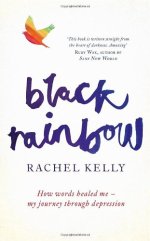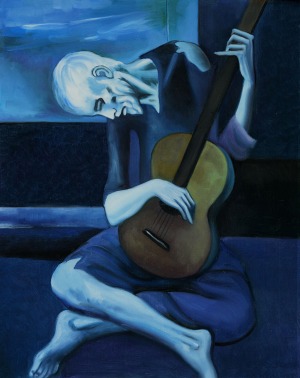How making words cured me
Here,
journalist and artist Helen Kirwan-Taylor talks about how art therapy helped
her recover from ME and anxiety, and ultimately inspired the trajectory of her
life and career. Her successful debut solo exhibition was recently held at
Themes and Variations Gallery on Westbourne Grove.
When I was hospitalised
twenty years ago with ME (they thought) the only word I could find to describe
how I felt was “lead”. It’s as though
someone had poured hot metal down my throat and it had filled every corner of
my exhausted body. A good day in
hospital was one in which I stayed awake through my husband’s visit.
Having been pumped up with
MAOI’s (the strongest anti-depressants on the market that are still effective
though too toxic for most practitioners to prescribe today) I wasn’t that
depressed, but then again I was on leave from my job for the American news
programme 60 Minutes, and basically cut off from the world. Friends spoke about
me in hushed tones. Mine was a mysterious disease, the sort that might be made
up. I was on the stress wing of the Charter Nightingale Hospital (now the Capio
Nightingale) with some seriously unhappy people in the throws of nervous breakdowns.
One man had discovered his daughter was soliciting on the street and had
contracted HIV. Many had lost their businesses. Noone on the ward had much
sympathy for a newly married American who looked fine but kept going on about
how tired she was. The doctors, however, knew that my 15-year-old sister, Tasha,
had been brutally murdered when I was 13 (and the murder covered up): they
suspected my exhaustion was psychosomatic.
One afternoon my
frustrated psychiatrist suggested I attend art therapy. At first I refused,
claiming I couldn’t manage the stairs (it usually meant three hours of recovery
after just one flight). He insisted, volunteering to walk with me regardless of
the time it took.
The art room was clearly
health and safety-ed with only bits of paper, kiddie scissors, crayons and PVC
glue left on tables (no one could really self-harm here unless they drank the
whole bottle). I had brought my handbag along as though I were leaving the
building (this was a big excursion
for me).
The PVC bottle really
caught my attention, but I needed something of interest to glue. My handbag! I
reached in and opened my wallet. Credit cards! Then (my handbag was large), I
pulled out a copy of Tatler, some silk fabric samples, a handful of buttons,
some Alka Seltzer tablets, a packet of Estee Lauder serum capsules and a
precious gold icon my mother had given me and began cutting. I took the papers
we were meant to draw on, sellotaped them together and then (without the
slightest idea of what was happening to me) began collaging a figure that
clearly was me though I had no idea at the time.
At 6pm the art therapist
said they were locking the room for the night. With glue all over my hands, I pleaded
to remain. At 7pm, having missed dinner, the psychiatrist on night duty came
down and found me sitting on the floor, some of my clothes shredded, painting
madly with my lipsticks. His immediate reaction was concern (perhaps I was mad
after all?). I was ushered out but as soon as door closed, the fatigue came
back, worse than ever. It took me 30 minutes to walk back up the stairs, yet a
mere two hours earlier I was cutting and gluing with abandon.
What had happened (with
hindsight) is that the scrapbooking had given me a reprieve from the fatigue. A
creative task is the easiest way to achieve a sense of flow (writing for me is
never without pain, this was very different). I returned the following day in a
manic state of excitement to continue where I had left off (now carrying other
inmates’ possessions to be sacrificed). Again, I forgot I was leaden limbed.
I slowly recovered from
ME in the hospital where I was given special dispensation from group therapy (I
talked too much) to spend more time in the art therapy room. I had fans (mostly
from the addiction unit) who came to watch or even join in. People suffering
from depression have no attachment to wordly goods: one lady handed over her gold
plated earrings to complete my self-portrait.
Some psychiatrists think
that depression may be linked to the absence of creative outlets. American health
care writer Ellen Dissanayake says that making art has evolved not only as a psychological
need, but also as a “proto-aesthetic operation” involving using one’s hands for elaboration, repetition
and manipulation, starting in early childhood. Making things sets off a
positive loop (as well as a surge of serotonin) called “efforts driven rewards”
which is why we feel so good when our cake is baked and iced or our room
cleaned up.
Brain-wise, moving our hands activates larger
areas of the cortex than movement of other parts of the body such as our legs
or back muscles. Both the Maker and the
Tinkering movements in the U.S. are based around the fundamental need that
humans have to create (they are also a reaction against the insidious use of
technology). Camps have been set up across the country to encourage children to
do what most of us did when we were small e.g. muck about until we were told to
stop.
My art therapy experience opened a whole new
world for me, which culminated in an exhibit of three-dimensional words at
Themes & Variations in Notting Hill this month. My making year passed in a
fog. Days came and went in which I forgot to eat or even wash. I worried about
a relapse (I had one when I was working too hard for the Financial Times seven
years ago), but this time none came.
I was stressed, yes, but motivated, almost high.
Some girlfriends were jealous of my passion (I behaved as though in the throws
of a passionate love affair).
When I stopped, the familiar anxiety, exhaustion
and self-doubt resurfaced. Flow takes a great deal of discipline, preparation
and energy to achieve but I now see why writers keep writing, musicians keep
composing and cooks keep cooking regardless of commissions or even outside
interest. Woody Allen makes films because he doesn’t want to know what would
happen if he stopped. He takes the hits from the critics because it hurts less
than the hits he gives himself. I’m not
talking high art either. Crafting is a huge movement in the UK because it
brings such wonderful “effort driven rewards.” DIY fits into the same category, and gardening.
Separated from my serotonin drip, I had become
depressed. I spent hours googling “how to cope with failure.” I avoided going
into the gallery (a sale gave me a momentary hit but then I felt bleak again). My
GP prescribed an anti-depressant and I signed up for a Mindfulness course, the
usual usual.
Then I came to an obvious conclusion. Keep
making, regardless. Be Woody Allen. I suggested to the gallerist that I bring
new words into the gallery and place them in a specially made flexible frame rather
like bouquets of flowers? (which die.) Perhaps other artists think more
strategically, but for me part of the creative process is being random and
spontaneous. There isn’t a business plan (or any plan) apart from re-enacting
my art therapy days and going mad with scissors and glue once more.

 One of her favourites was George Herbert – and coincidentally I had just finished John Drury’s simply wonderful book on Herbert’s life and poetry,
One of her favourites was George Herbert – and coincidentally I had just finished John Drury’s simply wonderful book on Herbert’s life and poetry, 
